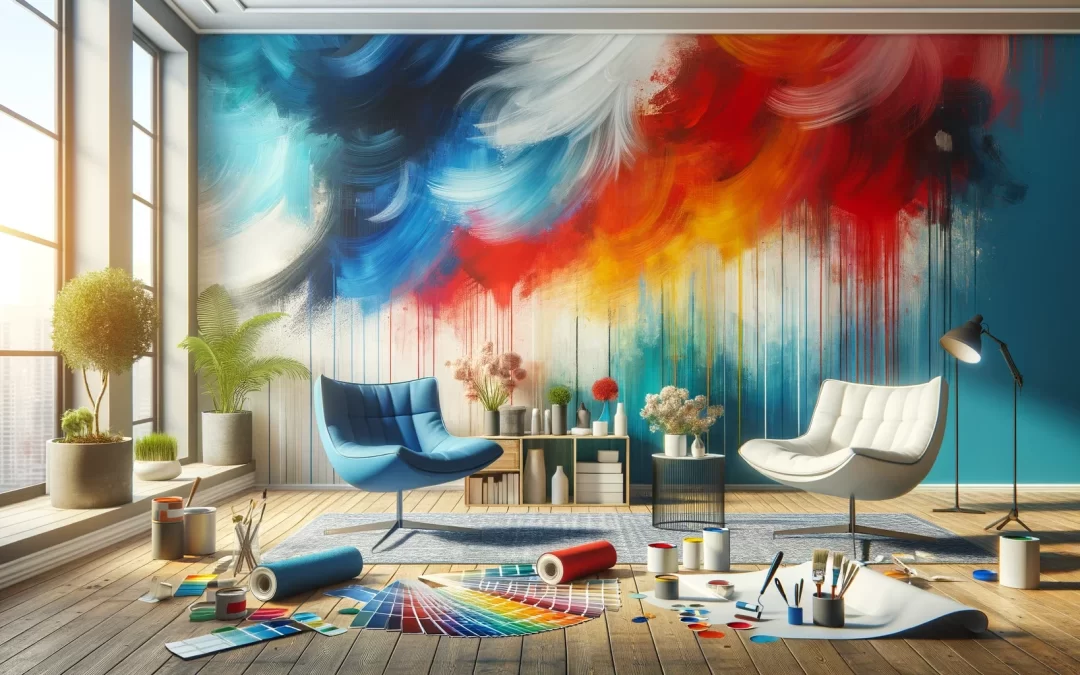The Psychology of Color How Paint Affects Mood

Color can affect your mood in more ways than you think. Some hues can energize you, while others can calm and soothe.
However, it’s important to remember that these effects can vary from person to person. While basic color theory associates certain colors with general moods, everyone has unique associations and responses to certain shades.
Lighter Shades Make Spaces Feel Larger
Color psychology is widely used in marketing and advertising. Companies rely on it to evoke certain emotions in their target market, like the Coca-Cola red that reminds people of happiness and excitement or the IBM blue that encourages feelings of trust and serenity. Although the exact impact of a particular color can vary from person to person, based on gender, cultural context, and neurological variances, many general guidelines have been established.
For example, lighter shades tend to make spaces feel larger and open, which can be energizing or overwhelming depending on the individual. In addition, the saturation of a color can also influence mood, with highly saturated colors being eye-catching and stimulating, while more muted colors almost fade into the background and can be relaxing or calming. The psychological effects of color are important to keep in mind when doing a home remodeling project, especially when trying to promote an energy-boosting or relaxing atmosphere. This can help you achieve your desired mood and increase the overall enjoyment of your home.
Darker Shades Make Spaces Feel Smaller
Color can affect our mood in a number of different ways. It can make us hungry, inspire trust, cause feelings of energy or calmness, and much more. In fact, color psychology is so powerful that some businesses even use it in their branding.
Researchers studying color have found that certain hues elicit specific feelings and behaviors in individuals. Warm colors such as reds and yellows inspire feelings of warmth, comfort, and happiness while cool shades like blues and greens can bring about feelings of serenity and loyalty.
The intensity of a color is also important when considering its psychological impact. Highly saturated shades can be eye-catching, but they can also feel jarring and intense. This is because they evoke more emotional responses. Likewise, muted shades can fade into the background, which can either be calming or claustrophobic. It’s also worth noting that your personal experiences and upbringing can affect how you feel about certain colors. For example, some people might think that the color green symbolizes environmental sustainability while others might associate it with money or health.
Highly Saturated Colors Are Eye-Catching
In art, design, and marketing, saturated colors convey vibrancy and intensity. They capture attention more effectively, influencing memory and recall. Vivid hues can inspire excitement and energy, while desaturated tones may induce calmness and introspection.
A well-known example of color psychology is IBM’s classic shade of blue, which instantly invokes feelings of trust and dependability. However, the power of a brand’s colors extends beyond its logo to the entire customer experience.
The effects of color on mood and behavior are complex, as personal experiences and context muddy the way individual colors affect us. Although there is some anecdotal evidence, like the fact that red stimulates aggression or that green evokes serenity, there aren’t many clinical studies to back these claims. Nonetheless, understanding the basic principles of color psychology can help you choose colors that elicit positive emotions and stimulate positive behaviors in your commercial space.
More Muted Colors Are Relaxing
Although scientists have found that certain colors affect our behavior and mood, it’s important to remember that each person is different. A person’s experiences, personality, and cultural background may affect how they respond to certain colors.
For example, a person who grows up loving the color blue may have more of a preference for it than someone who disliked it as a child. Additionally, gender can play a role in how people perceive and interpret certain colors.
Women often perceive green as more soothing and relaxing, while men tend to see reds as more energizing. Ultimately, the most important factor in choosing the right paint color for your home or business is context. The psychology of color is a powerful tool, but only when it’s used in the context of your specific product or brand. Then, it can help you create the desired feeling, mood, and image for your brand or product. For example, the red associated with Coca-Cola is evocative of feelings of joy and excitement, while IBM’s timeless shade of blue evokes feelings of trust and reliability.







